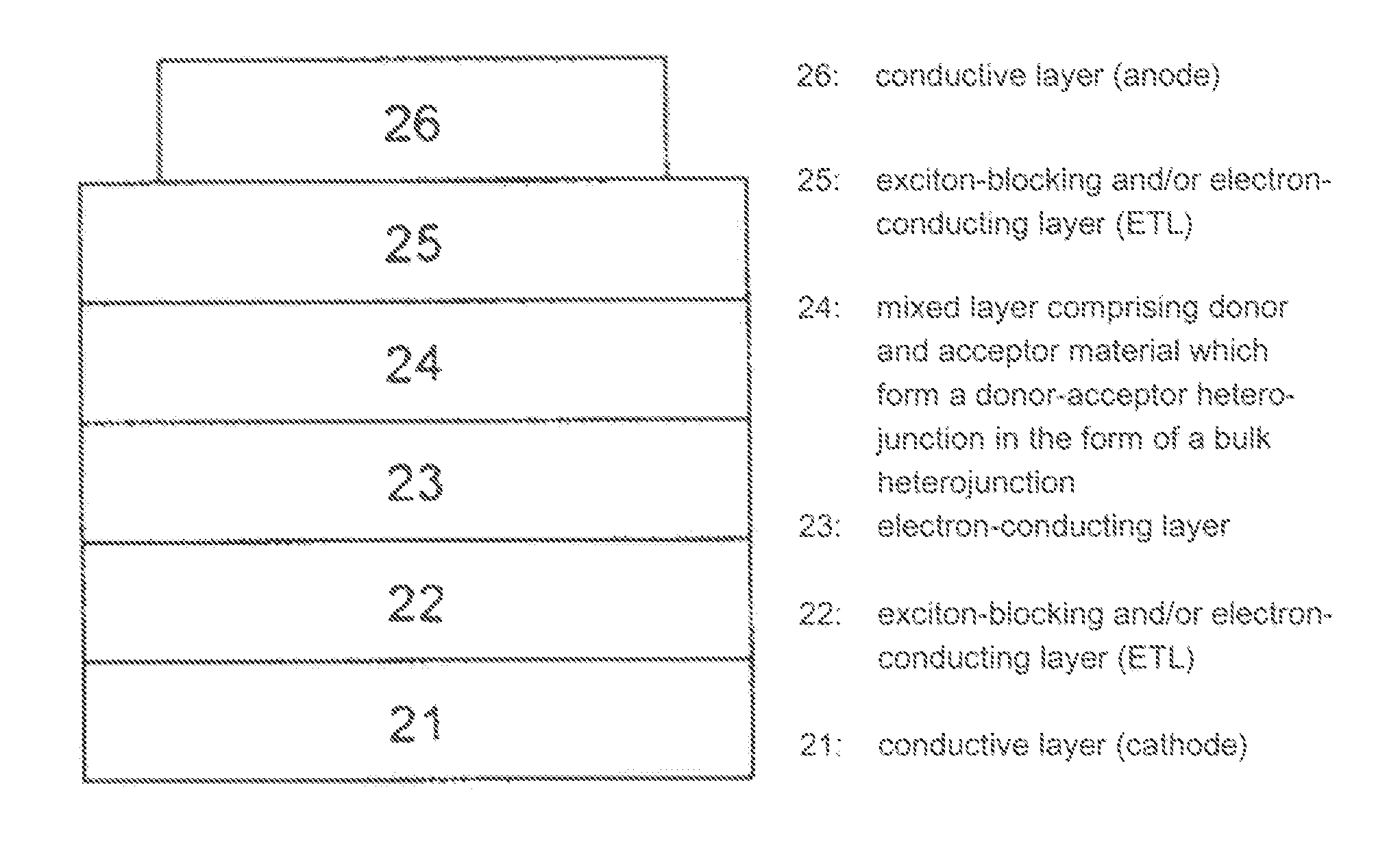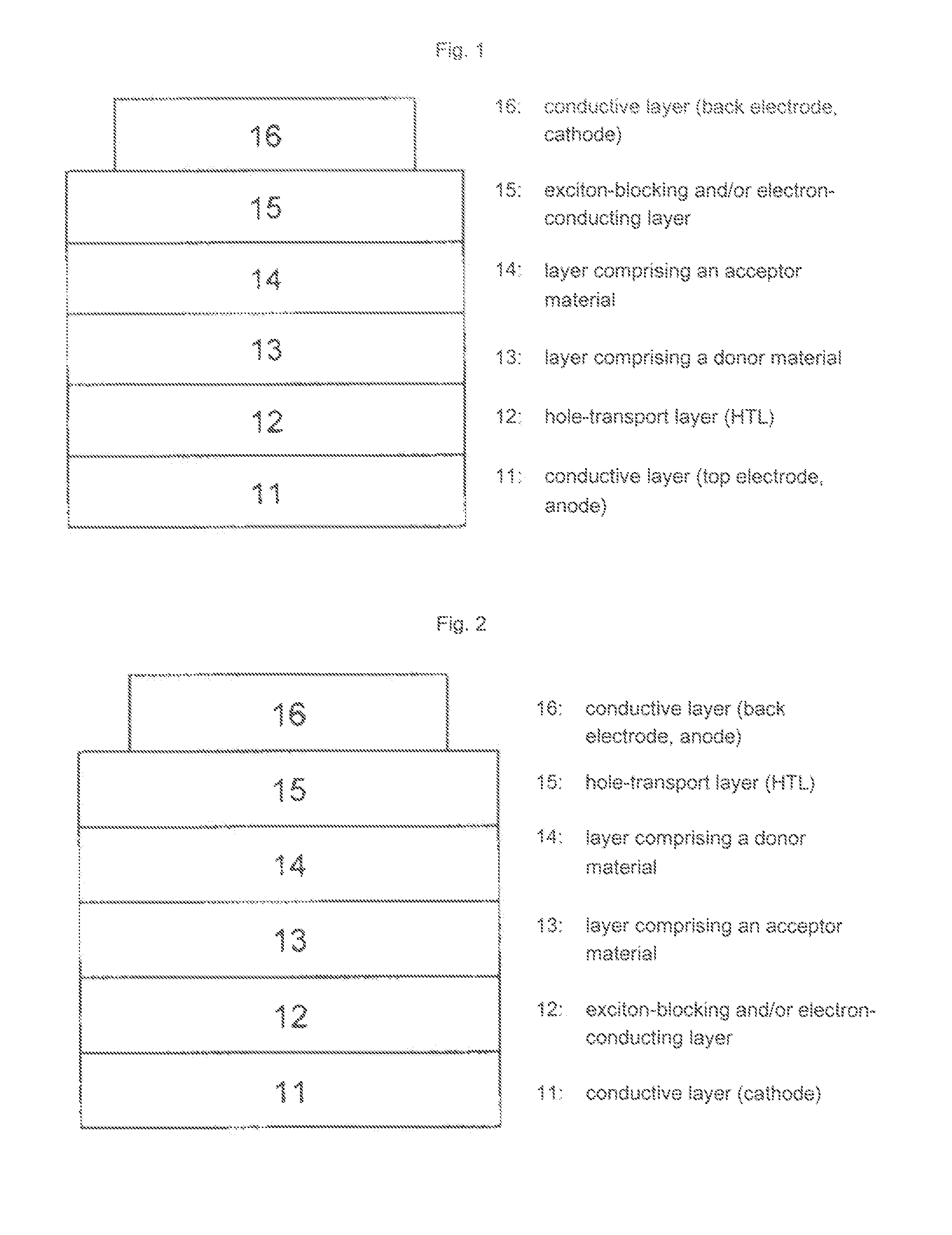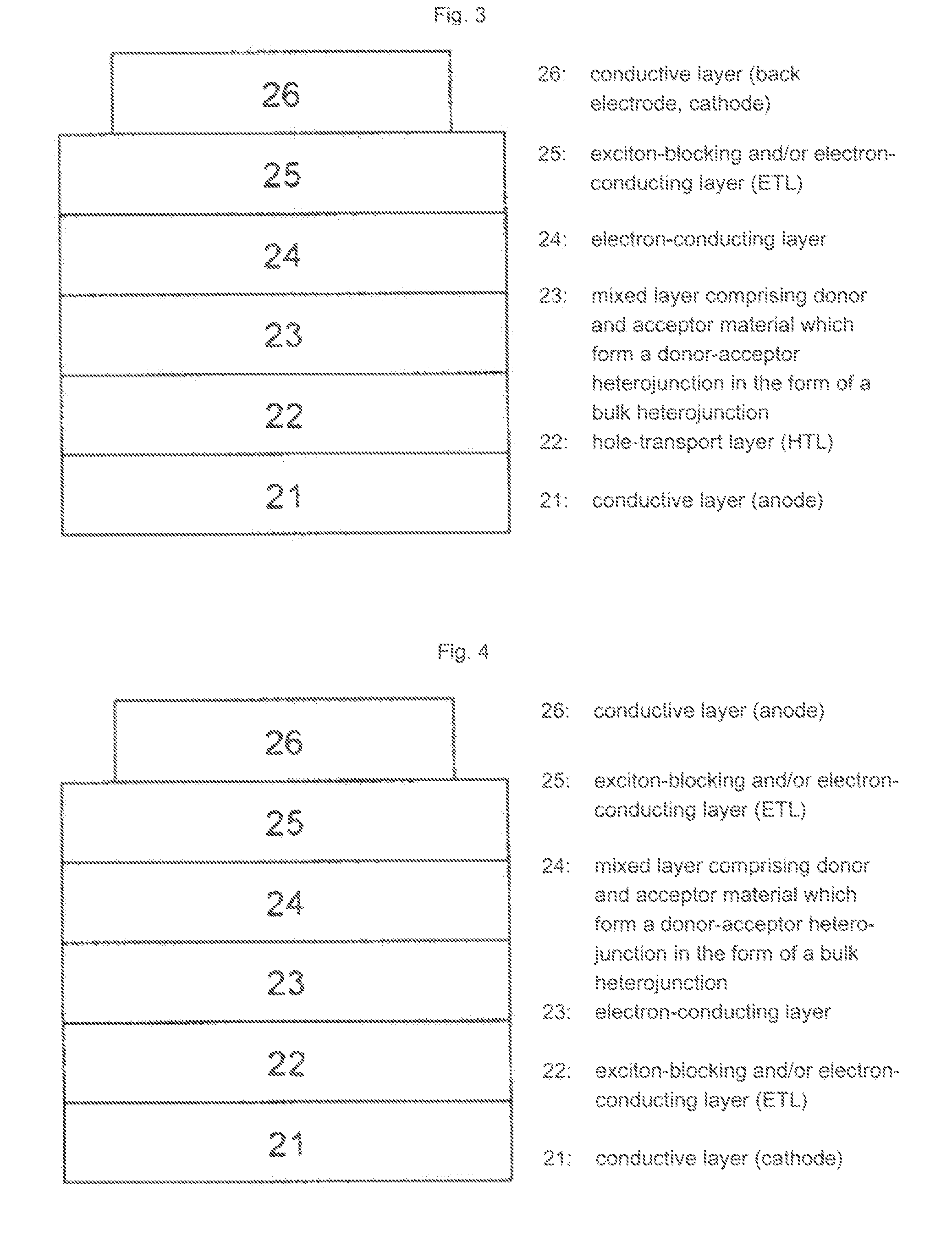Use of substituted perylenes in organic solar cells
- Summary
- Abstract
- Description
- Claims
- Application Information
AI Technical Summary
Benefits of technology
Problems solved by technology
Method used
Image
Examples
examples
I. Preparation of Precursors
Example I.a
[0305]
[0306]7,9-Diphenyl-8H-cyclopenta[1]acenaphthylene-8-one was prepared according to Müllen et al. Chem. Eur. J. 2001, 7, 10 2197-2205. A mixture of 10.0 g (28 mmol) of 7,9-diphenyl-8H-cyclopenta[1]acenaphthylene-8-one, 9.8 g (52 mmol) of n-propyl-maleimide in 140 ml of chlorobenzene was heated at reflux for three hours. After cooling to room temperature, a solution of 5.8 g (37 mmol) of potassium permanganate and 9.7 mg (37 mmol) of 18-crown-6 was added. The mixture was heated at reflux for 2.5 hours. After cooling to approx. 120° C., the mixture was filtered and the residue was washed repeatedly with chlorobenzene. After cooling to room temperature, 9.70 g (74%) of the product were obtained from the filtrate.
example i.b
[0307]
[0308]0.41 g (0.9 mmol) of the compound obtained in example I.a was suspended in 30 ml of glacial acetic acid. To this were added 0.46 ml (9 mmol) of bromine and one grain of iodine. The mixture was stirred at 30° C. for 28 hours. Then another 0.12 ml (2.25 mmol) of bromine was added and the mixture was stirred at room temperature for six hours. Subsequently, the bromine was expelled by bubbling, and the residue was filtered off and washed with water and ethanol. This gave 362 mg (75%) of the title compound.
Example I.c
N-Phenyl-4-bromonaphthalene-1,8-dicarboxylic monoimide
[0309]
[0310]A mixture of 10.0 g (34 mmol) of 4-bromo-1,8-naphthalenedicarboxylic monoanhydride, 4.4 g (5.7 mmol) of aniline and 100 ml of propionic acid was heated to reflux overnight. After cooling to room temperature, the precipitate was filtered off with suction, washed with water and dried. This gave 10.1 g (68%) of the title compound as a colorless compound.
Example I.d
N-Phenyl-4-(pinacolatoboron)naphthale...
example i
[0337]
[0338]A mixture of 3.0 g (10.8 mmol) 4-bromo-1,8-naphthalic acid anhydride, 2.1 g (13.0 mmol) of 1,8-diaminonaphthalene, 1.99 g of zinc(II) acetate (10.8 mmol) and 300 ml of quinoline were refluxed at 145° C. for 5 hours. The reaction mixture was poured onto 500 mL of 1M hydrochloric acid. The precipitate was sucked off, washed with hot water and then crystallized from toluene to give 3.2 g (74%) of a violet-red compound.
[0339]Rf (dichloromethane)=0.80
PUM
| Property | Measurement | Unit |
|---|---|---|
| Nanoscale particle size | aaaaa | aaaaa |
| Temperature | aaaaa | aaaaa |
| Temperature | aaaaa | aaaaa |
Abstract
Description
Claims
Application Information
 Login to View More
Login to View More - R&D
- Intellectual Property
- Life Sciences
- Materials
- Tech Scout
- Unparalleled Data Quality
- Higher Quality Content
- 60% Fewer Hallucinations
Browse by: Latest US Patents, China's latest patents, Technical Efficacy Thesaurus, Application Domain, Technology Topic, Popular Technical Reports.
© 2025 PatSnap. All rights reserved.Legal|Privacy policy|Modern Slavery Act Transparency Statement|Sitemap|About US| Contact US: help@patsnap.com



